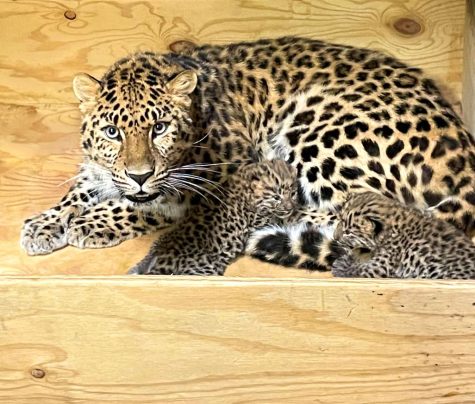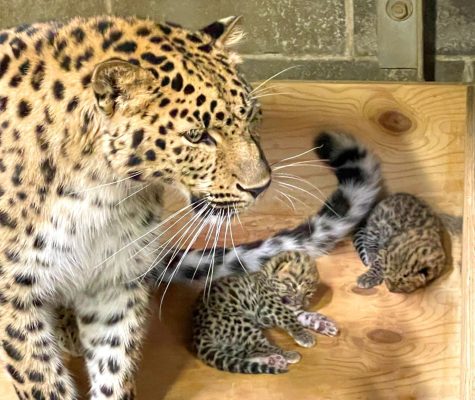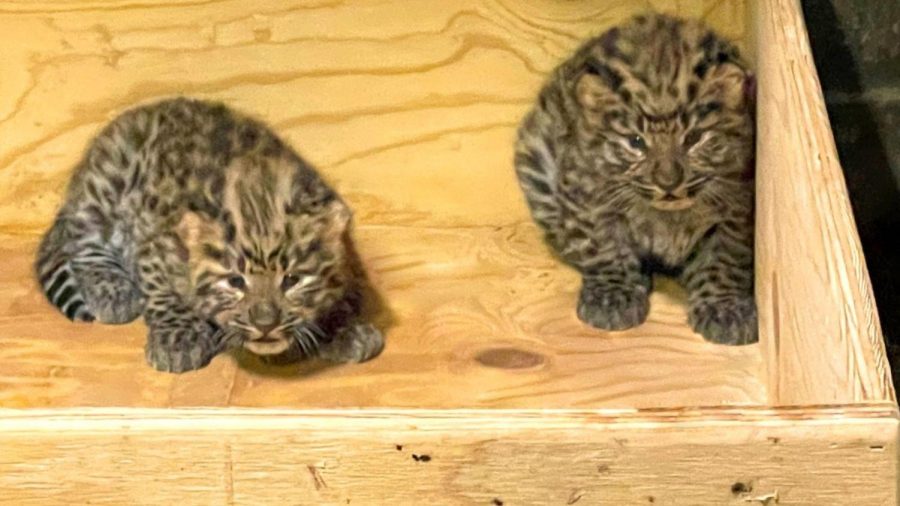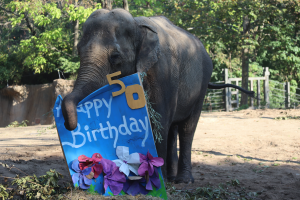Two baby leopards born at STL Zoo. So what’s so Jewish about them?
Published May 19, 2022
Two critically endangered Amur leopard cubs were born at the St. Louis Zoo on April 21. The little females are the first cubs born at the Zoo since 2010 and their births are a significant contribution to the population of Amur leopards in North American zoos. This species is considered one of the most endangered cats in the world.
What’s so Jewish about the leopard cubs
One of the cubs is named Anya (pronounced AH-na). According to the Kveller Jewish Baby Name Finder, Anya is a derivative of Chana, the mother of the prophet Samuel. Her father is named Samson, who the biblical Hercules, a man of super-human strength who nonetheless could not escape tragedy. Samson’s story is found in the Book of Judges chapters 13-16. He is the last of the major judges who led the Israelites.
Anya’s twin is Irina, (pronounced eye-REE-na), which means “peace.” Both were named by the Zoo’s Carnivore Care Team. This is the first litter for mother Dorothy (Dot), which means “Gift of God” and Samson.

Mother and cubs are doing well and will remain in their private, indoor maternity den inside Big Cat Country for the next few months to allow time for the cubs to grow large enough to safely navigate all of the obstacles in the outdoor habitat. Samson can be seen by Zoo guests in his habitat at Big Cat Country.
“Dot is an excellent mother. It’s exciting to see this first-time mom providing great care to her cubs,” said Steve Bircher, Kevin Beckmann Curator of Carnivores at the Zoo. “There are so few of these rare big cats left in the world and each birth is extremely important for the survival of the species.”
The first few months of life are critical for newborn leopards. The animal care team is closely monitoring the family and it appears that both cubs are healthy. On May 5, at two weeks old, the cubs had their first well-baby check by the Zoo veterinary care team. They were briefly examined and weighed, then returned to Dot in the maternity den. Each cub weighed nearly 2.5 pounds at that time, which is normal for their age, according to Zoo veterinarians. Adult Amur leopards can weigh between 60 and 125 pounds.
Fewer than 100 Amur leopards (Panthera pardus orientalis) remain in the coniferous forests of Primorye Province in far eastern Russia.

Leopards in Jewish scripture
Our Jewish texts contain plenty of references to “big cats.” In the Mishnah, it is written:
“Be bold as a leopard, light as an eagle, swift as a deer and mighty as a lion to do the will of your Father in Heaven” (Rabbi Judah ben Tema, Ethics of Fathers 5:20). This saying is also the opening quote of the Shulchan Aruch (The Jewish Code of Law).
According to Chabad.org, in Isaiah’s vision regarding the age of Moshiach, in which he describes the peacefulness that will exist between the wild animals and their prey, he prophesizes that “the leopard shall lie down with the young goat,” the goat being the usual prey of the leopard.
There are also some names of places in scripture that are derived from the leopard. There was a fortified city of the Tribe of Gad named Nimrah (leopardess), and there was a region in Moab referred to as Nimrim (leopards). The Talmud refers to cities named Namer and Nameri.
The Talmud also refers to leopard-like behavior when describing a dark period in the history of the Jewish people:
“The Lord said, “I said that Israel should be considered before Me as the cherubs, and they set themselves as a leopard. Another version: R. Avahu said, The Lord said, “Even though they put themselves as a leopard, they are considered before Me as the cherubs.” (Kiddushin 70a)”
According to Rabbi Natan Slifkin, director of the Biblical Museum of Natural History in Israel, “God wanted the Jewish people to be as cherubs, which represent innocence and fidelity. But instead, the Jewish people “set themselves as a leopard.” What does this mean? Some explain that just as the leopard is full of dark spots, so too were the Jewish people spotted with sinners.”


















